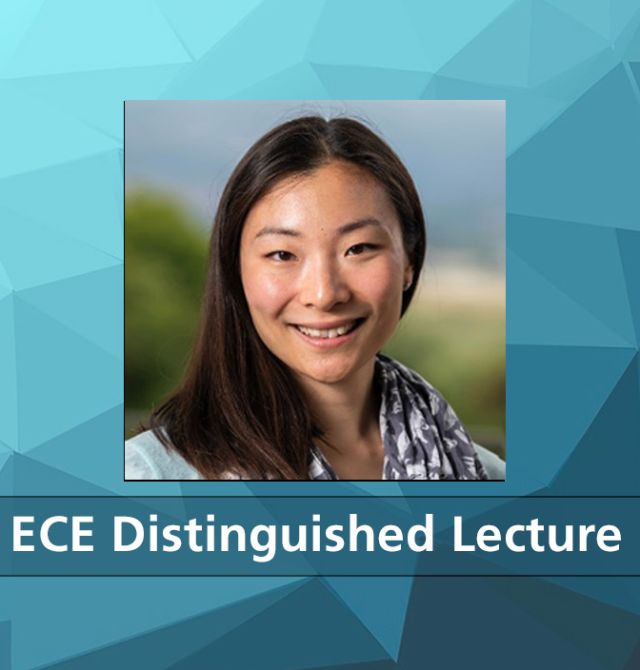ECE Seminar Series – March 22 (Fri) @ 2:00pm: “Latest Progress and Challenges in 300 mm Monolithic Silicon Photonics Manufacturing,” Takako Hirokawa, Principal Device Engineer, GlobalFoundries

Come at 1:00p for Cookies, Coffee and Conversation!
DISTINGUISHED LECTURE at the ECE SEMINAR SERIES
Abstract
In this talk, I will discuss the latest developments in the GlobalFoundries FotonixTM program, including enhancements in device performance, packaging, PDK compact models, and in-house test capabilities. In recent years, the higher bandwidth requirements for datacom systems using intensity modulated direct detect (IMDD) signaling require higher optical powers to close the links. It is therefore imperative to have devices that are impervious to damage or excess loss due to nonlinear phenomena at these higher powers especially on the transmit side. While some silicon-based active devices such as modulators must remain in silicon to modulate the optical signal, passive components such as waveguides and splitters can be made more robust at these higher optical powers. To that end, we have developed a suite of low-loss silicon nitride (SiN)-based passive devices. With these SiN passives, we have designed and demonstrated an O-band coarse wavelength-division multiplexer (cWDM), using Mach-Zehnder interferometers (MZIs). To accommodate the higher incoming optical power as well as the need for lower pitch optical I/O, we continue to make progress on SiN-based edge couplers at both 250 µm and 127 µm pitch. These advances have been added to our PDK, which is updated on a regular cadence such that customers can access new features in a timely manner as we continue to make improvements. While we support custom designs, we produce a PDK with standardized parameterized cells (p-cells) and hardware-based models, so that customers can use proven device designs in their PICs and model system-level performance. To benchmark our technology, we have designed and characterized circuits on our multi-project wafer (MPW) fabrication runs, which run a standard process flow. For example, we have demonstrated a transimpedance amplifier (TIA) with bandwidth up to 100 GHz by incorporating an optimized high-Q inductor using the monolithic RF CMOS devices that are part of the technology. In addition to circuit demonstrations, we have done system-level analyses of differential group delay (DGD) [8] and propose a polarization-dependent compensation scheme in 200 Gb/s PAM-4 receivers.
Bio
Takako Hirokawa (Member, IEEE) received B.S. degrees in applied math and engineering physics from the University of Colorado Boulder, Boulder, CO, USA, and M.S. and Ph.D. degrees in electrical and computer engineering from the University of California, Santa Barbara, CA, USA, in 2016 and 2020, respectively. She is currently a Principal Device Engineer at GlobalFoundries.
Hosted by: The ECE Seminar Series
Submitted by: Clint Schow <schow@ece.ucsb.edu>